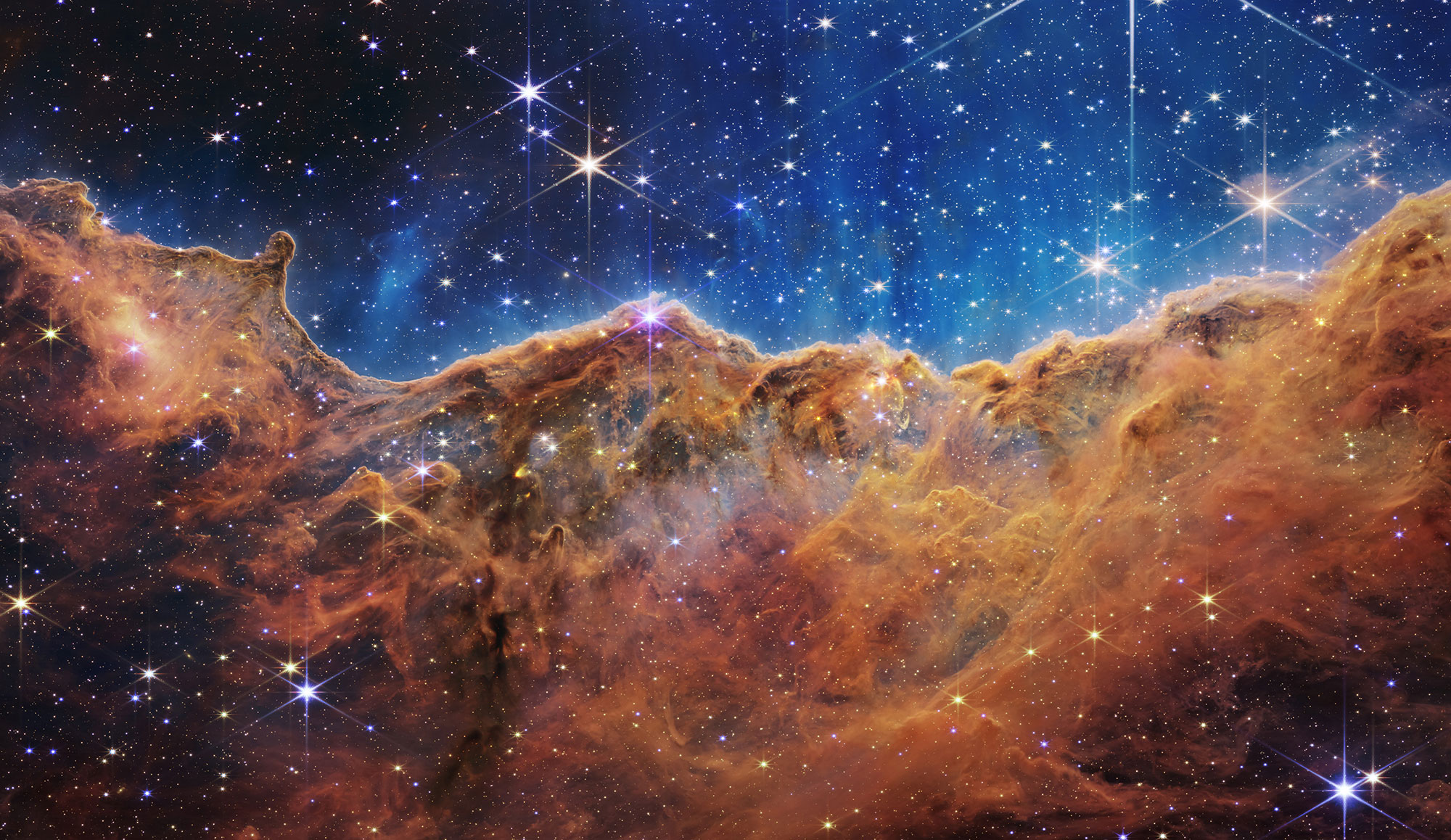Providing ground-based hyperthermal and hypervelocity environments in support of the nation’s research and development activities in thermal protection materials, aerothermodynamics, vehicle structures and hypersonic propulsion and flight.

Overview
The Ames Electric Arc Shock Tube (EAST) Facility is the only shock tube in the U.S. capable of simulating shock-heated gas environments at very high enthalpies encountered by atmospheric entry vehicles. The facility generates conditions for measurements of spectrally resolved radiance and kinetics of shock-heated gases from the vacuum ultraviolet through mid-infrared. The operating envelope of EAST covers velocities from 1.3 to 46 km/s at pressures between 13.3 and 5.3E+05 Pa in a variety of planetary atmospheres. The radiation data aid validation of computational tools used for the design and analysis of hypervelocity vehicles.
The EAST facility occupies approximately 400 square meters and is comprised of a 40-kV high voltage DC power supply, large 1.25 MJ capacitor bank, conical arc driver, 30-inch driver and 9 m long driven tube. Built in 1965, and after a few years of development, the EAST was commissioned fully operational in 1968 and has since become a key facility in the development and refinement of entry shock wave physics modeling and hypersonic Computational Fluid Dynamics (CFD) studies. Most recently, the EAST facility has been used as the agency’s primary ground test facility for quantifying shock radiation for Sample and Lunar return (Earth entry), Venus, Titan, Mars and outer planet entry testing.
The EAST Facility provided key radiation data for many notable space programs such as the Mars Science Laboratory and Mars 2020, Orion Exploration Flight Test 1 (EFT1), OSIRIS REx, Mars Viking, Phoenix and InSight probes, and for Titan, with the Huygens probe and the upcoming Dragonfly New Frontiers mission. The EAST facility also conducted research for Neptune entry by characterizing electron density of shock-heated hydrogen at speeds up to 34 km/s It was also used for characterizing electrical conductivity of air and hydrogen at speeds up to 46 km/s as part of magnetohydrodynamic (MHD) acceleration studies.
The EAST was also utilized as a 76.2 cm shock tunnel to conduct shadowgraph imaging and pressure measurement on various small scale blunt-body and hypersonic aircraft models and blast hardened ground facilities.

Capabilities
EAST operations require strong technical and analytical skills in the areas of high vacuum generation, materials science, cryogenic and compressed gas techniques, high voltage electrical, hypersonic aerodynamics, spectroscopic optical instrumentation, sensitive ionization measurement and computerized data acquisition systems.
Equipment:
Oil-free roughing and high vacuum pumps combined with driven tube heating (100°C) and gas purge during pump-down result in base pressures on the order of 1.3E-04 Pa before test gas loading. Vacuum pumping and loading systems are automated, augmented by a four channel electronic gas flow mixing and management system. A cold oxygen plasma system is utilized to remove H and C contaminants in the driven tube section resulting in reduced CN and H-a emissions in shock heated air spectra. Vacuum quality and test gas mix verification is measured using a Residual Gas Analyzer (RGA-100AMU Quadrupole Mass Spectrometer). Other high vacuum measurement instruments are available as required.

Optical instruments include two specialized high-vacuum enclosures which house the collection optics coupled to four PI-Acton 0.5 m imaging spectrometers. The spectrometers are equipped with time-gated intensified CCD arrays and near- and mid-infrared imaging CCD cameras. This instrumentation suite allows simultaneous spectral measurement of the shock radiation at multiple points along the same axial region within the shock tube. The spectrometers are calibrated for absolute spectral radiance from 120-5000 nm. Time-of-arrival instruments consist of fiber-coupled photomultiplier tubes and high-speed piezoelectric pressure transducers. Absolute radiance calibration sources include a 30.5cm, 1.8 kW integrating sphere, 30W deuterium UV/VUV lamp and 1.0 kW tungsten ribbon lamp. LED lasers and a variety of spectral lamps are available for wavelength calibrations and optical alignments.
Data acquisition systems include a high-speed data system with collection speeds capable of 20 channels at 200 MS/s and 24 channels at 5 MS/s for monitoring shock arrival and instrumentation responses and a vacuum data system for recording pump-downs, shock tube temperatures and other facility related data.

Staff:
Typical Test Team is comprised of the following:
- Principal Investigator and research support team
- Facility Manager
- Facility/Test Engineer
- Facility Operator/Mechanical Technician
Recent Customers/Users:
Most recent testing has supported these NASA programs and technology development initiatives:
- Mars Science Laboratory and Mars 2020
- Orion Exploration Flight Test (EFT)
- OSIRIS REx
- InSight, Mars Viking and Phoenix probes.
- Dragonfly New Frontiers
- Cassini-Huygens Mission (Huygens Probe to Titan)
- Hypersonics Project/Fundamental Aeronautics Program and In-Space Propulsion Technology Program
- Various “in-house” testing for NASA Entry Systems and Technology Division CFD code development, refinement and validation.
POC
Mark McGlaughlin, Facility Manager
Mail Stop 229-4 Bldg 229 Rm 157
P.O. Box 1
Moffett Field, CA 94035-0001
Voice 650.604.4547
Fax 650.604.5422
EAST Performance Range



























